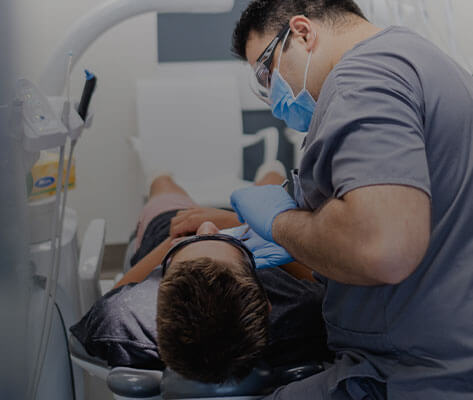early treatment
catching problems early
Dr Vas recommends young children be evaluated by an orthodontist by the age of 7. This is the age recommended by international orthodontic associations. Many orthodontic problems are easier to correct if detected at an early age before jaw growth has slowed. Early treatment may mean a patient can avoid expensive, time consuming procedures and more serious complications at a later stage.

treat crowded teeth and avoid tooth extraction
One problem that is addressed at this age is teeth crowding. After an examination, Dr Vas can tell whether a child’s mouth will be able to accommodate all of his or her adult teeth in the future. If not, we can work to expand the jaw now using an expansion appliance. This means no teeth will need to be extracted later.

correct a misaligned bite for better dental health
Another issue that can be addressed at this age (which can be related to teeth crowding) is a misaligned bite due to a narrow jaw. In general, the upper set of teeth should fit around (outside) the lower set of teeth. As such, the upper jaw should be wider than the lower jaw. It is usually the upper jaw that undergoes expansion. An expansion appliance is typically fixed (glued) in place and is used to correct a number of misaligned bites, such as a posterior crossbite (when the back of the upper jaw is too narrow), or to treat harmful oral habits, such as thumb-sucking.
A child with a crossbite should be treated as early as possible. Since children are growing, crossbites tend to force the jaw into a non-centred position, and the jaw can then grow off centre. Crossbites can also result in TMJ (temporomandibular joint or jaw joint) problems over time. Expanding the jaw works well for girls before the age of 15 and for boys before the age of 16 as it is still soft and malleable.

benefits of an early consultation
An early consultation is essential for setting the best possible foundations for your child's oral health. Benefits, include:
- being able to embark on early treatment to avoid future orthodontics
- lessening the extent of future orthodontics if early treatment is required now
- familiarising your child with the orthodontic treatment process and clinic environment
- reducing the cost of major orthodontic treatment later
Early treatment, or phase 1 treatment as it is known, focuses on the jaw; phase 2 treatment focuses on the alignment of teeth. Therefore, both phases of treatment may be required, but by starting early, you have the potential to reduce the extent of orthodontic treatment and cost required.










